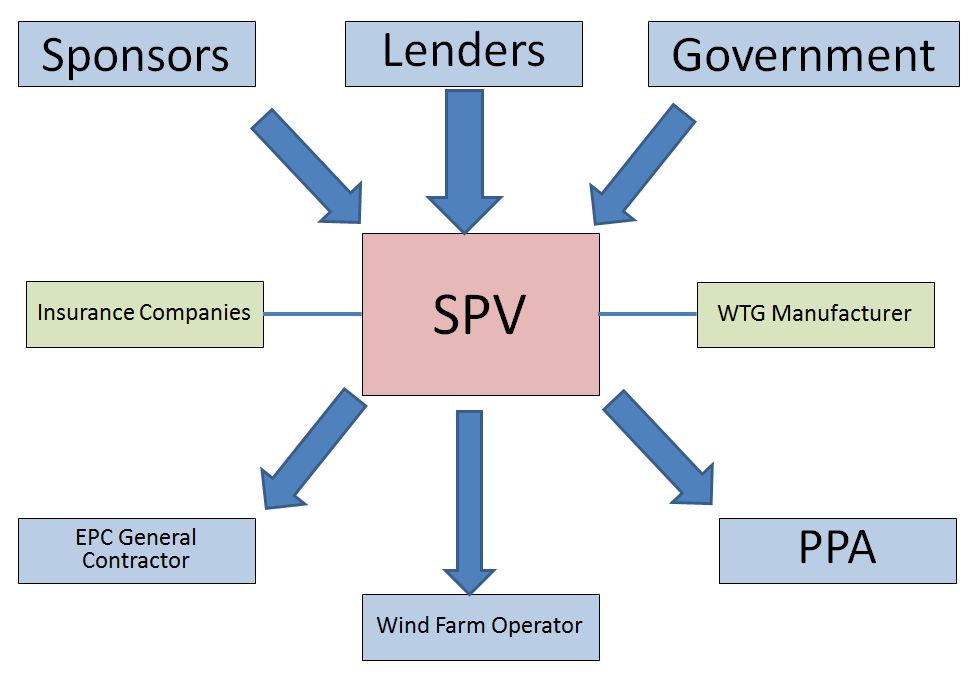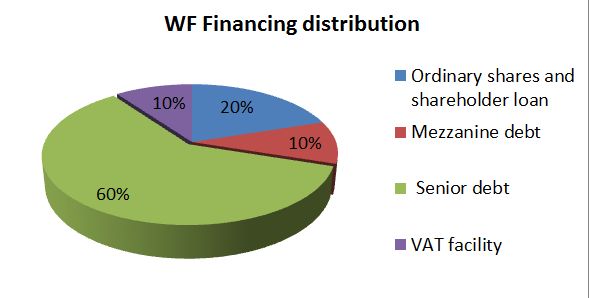Project financing is a financial structure where debt providers rely on revenues generated by the wind farm to service and repay borrowing, and where the financing is secured by the project assets.
It is a complex technique, that sees several parties involved in the project (equity, debt providers, power purchaser, land owner, WTG provider, etc.) working together.
The economic initiative (investment) is carried out by the promoters (Sponsor) through the establishment of a SPV (Special Purpose Vehicle), which allows the economic and legal separation of the investment.
Project finance allows investments of significant size, even exceeding the “credit capacity” of the companies involved.
The key concept is the free cash flow, the cash available for debt service, and the fundamental ratio is the annual debt service cover ratio (ADSCR), the ratio between operating cash flow(that is, “unlevered free” cash flow) and debt service during any one-year period. Other control ratios frequently used are Loan Life Cover ratio (LLCR) and Project Life Cover Ratio (PLCR): they will help top define the level of required equity.
Normally equity providers, debt providers and WTG suppliers will work with different financial models.
Among the various steps to be fulfilled to close the project finance, the most relevant are:
- Development of the economic and financial model
- Definition of the optimal mix of funding sources (debt and equity)
- Preparation of the optimal financial structure
- Definition of the collateral constituting the security package of the operation
- Finding of the sources of funding needed to meet the financial needs
In a onshore wind farm, equity is typically around 20%-30% of total funding, with ordinary or preference shares. Standard leverage vary from 70/30 to 85/15: if the project can give a steady, reliable cash flow it will probably be on the lower side.
Other sources of debt are unsecured junior (mezzanine) debt and senior debt.
A standard distribution can be something like this:
In case of event of default, lenders can step in and control the SPV.
Several risks have to be mitigated:
- Pre-construction risks (licenses, land lease rights, permits, social acceptance, country risk etc.)
- Construction phase risks (Costs exceeding budget, EPC contractor problems)
- Technological risks (WTG technological reliability)
- Operation phase risks (WTG availability, energy price)
For this reason a security package is prepared. There are contractual guarantees (obligation of the SPV to organize and handle the project diligently) and real guarantees (normally shares of the SPV).
The list of contracts to be negotiated normally includes:
- Contract with the General Contractor
- Contract with a WTG manufacturer for the turbines supply.
- Operation & Maintenance Contract.
- Insurance policies / Deposits.
- Grid connection contract.
- Land acquisition contracts.
- Agreements with municipalities.
- Contracts for the sale of electricity (PPA) and green certificates.


Leave a Reply